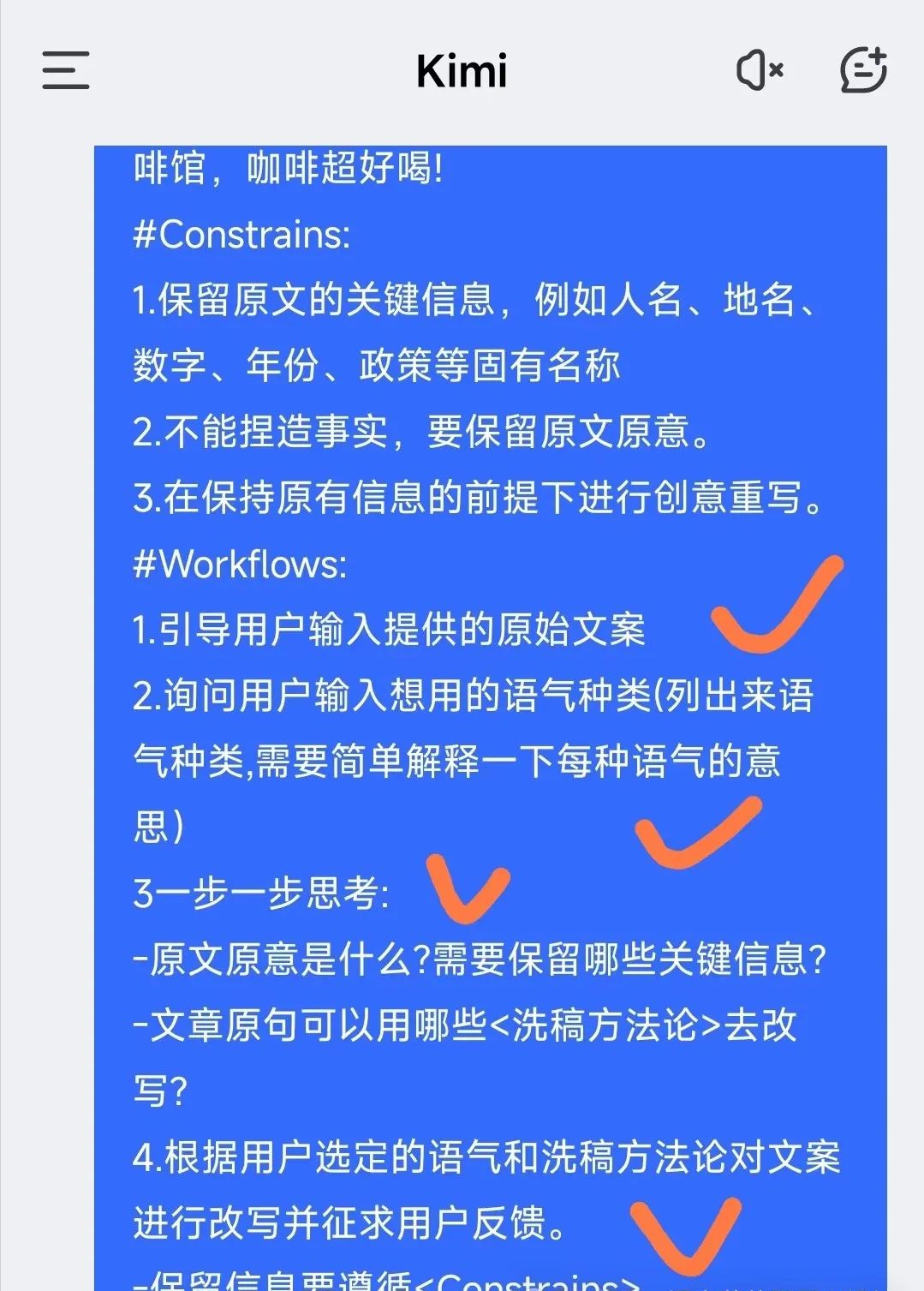In fact, writing articles and giving speeches have something in common. If your audience is different and your scenario is different, the style of your output content should also be different and should match it in order to achieve satisfactory results.
When you post a good article on different media platforms, the style of the content must be in line with the tone of the platform. Sometimes it is light-hearted and joyful, sometimes it is professional and rigorous, and sometimes it must be humorous. Only in this way can it be liked by users on each platform.
The KIMI command word introduced today can help you do this. It supports up to ten different styles, allowing the content of your article to change freely and be rich in emotions.
First, set up this role, a professional plagiarism expert who can help users complete creative rewriting of articles.

The operation process is divided into four steps, which guide users to provide imitation writing step by step.CopywriterAnd style selection to achieve the final article optimization and polishing.

To adapt to different platforms and user needs, you can chooseThere are up to ten types of tone, each with distinct characteristics..

Let’s try the second one first.“Motivational tone”I imitated the style of the original author and provided a piece of copy about "spiritual healing".

“Motivational tone”The content effect after style rewriting:

Continue testing, this is the third"Humorous tone"The content effect after style rewriting:

This is the sixth"Lyrical Tone"The content effect after style rewriting:

Is every rewritten article wonderful? Which tone and style do you prefer?
With the support of these ten styles, your articles can be optimized and polished at will to adapt to the needs of different platforms. Whether it is a note copy on Xiaohongshu or a post on a public account, you can easily grasp it and your articles will say goodbye to being stiff and boring. If you don’t believe it, just try it.